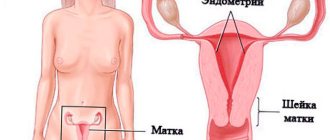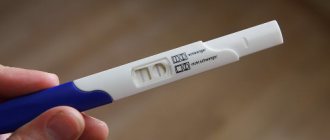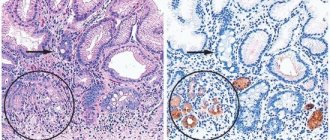Every woman eagerly awaits the birth of her baby. In each case, the birth process takes place differently: the fetus passes naturally through the birth canal (with or without ruptures) or the child can be born with the help of doctors performing a caesarean section. But regardless of the course and result of the process, representatives of the fairer sex experience discharge after childbirth. How long they last, the color, the smell - the article will tell you everything. You will learn about the signs of pathologies that occur in women after giving birth.
What is postpartum discharge?
The final stage of the birth process is the separation of the placenta or baby's place. This happens almost immediately after the baby is removed and the umbilical cord is cut. The place from which the placenta separated remains a wound surface, which, accordingly, begins to bleed.
Postpartum discharge is called lochia. They have a slightly different nature of origin than regular menstruation. The duration of lochia also differs from menstruation. While in the maternity hospital, specialists examine women daily. Attention is paid to the color and consistency of the discharge, as well as the presence or absence of an unpleasant odor.
https://youtu.be/YTTtYQ0Pcjk
Immediately after birth
What kind of discharge should there be in the first hours after childbirth? Immediately after the placenta is removed, the woman begins to actively contract the uterus. To enhance the effect, obstetricians apply the baby to the breast. Sucking movements and stimulation of the nipples contribute to the compression of the organ.
After giving birth, the woman remains in the maternity ward for several hours. A heating pad with ice and a press are placed on her stomach. This is necessary to prevent severe bleeding. The volume of blood coming out should not exceed 500 milliliters. The discharge during this period of time has a pronounced bloody character with an admixture of mucus and clots. This is how the remains of the placenta and membranes that were not removed come out.
What should a woman be wary of in discharge after childbirth?
If immediately after childbirth there is a lot of discharge, this is normal. Bleeding should be suspected if special postpartum pads are completely filled with blood within one hour. You need to immediately inform your doctor about this.
If, almost immediately after childbirth, the discharge stops or its quantity noticeably decreases, this is also a reason to consult a doctor. When lochia accumulates in the uterus, infection occurs, and this is very dangerous. The inflammatory process may also be indicated by high body temperature, fever or chills, and abdominal pain.
You also need to pay attention to the smell of discharge after childbirth. It should be neutral and not harsh. In the first days, there may be a musty smell of lochia after childbirth - this is normal. A sharp, putrid odor is a sign of the development of pathogenic bacteria and inflammation.
Scarlet discharge more than two weeks after birth is also a reason to be wary. As an option, when the lochia turned brown and then red again.
If more than two pads are filled with discharge within an hour, emergency medical attention is required. It must be remembered that in case of uterine bleeding it can be life-threatening. It is urgent to call an ambulance.
When, against the background of a brownish smear, a week after birth, the appearance of scarlet discharge is observed, the lochia then stops, then again occurs quite intensely, one can suspect a pathology, namely a lochiometer. This happens due to the anatomical features of the uterus, due to the formation of a hematoma, which interferes with the discharge of secretions. Because of this, there is an accumulation of mucus, bloody discharge and even the remains of the placenta. This creates an unpleasant odor in the discharge.
The smell of discharge in the first hours
What should the smell of discharge after childbirth be like? In the first hours, a woman may feel a stench. This is largely facilitated by the influence of hormonal levels, because after the baby is removed, active production of oxytocin and prolactin begins. Therefore, the new mother becomes more sensitive.
There is no need to worry about such discharge. Until you are transferred to the postpartum ward, doctors carry out careful monitoring. If anything goes wrong, doctors will definitely take action. But in most cases, the discharge is normal, and the woman ends up in her room 2-3 hours after a natural birth without complications.
The first few days
Many women wonder: what is discharge after pregnancy, what should it be like? During the first few days after the birth of the child, intensive discharge of lochia is observed. During this period, the woman’s birth canal is open, so regular hygiene procedures must be carried out to avoid infection. If infection occurs, the woman will definitely notice it. You can find out below what discharge is abnormal after childbirth.
Lochia in the first 5–7 days has a rich red or burgundy hue. They are quite thick and there is an admixture of mucus. Some women find lumps or clots. This is also the norm. During the first week of breastfeeding, the mother may feel slight pain in the lower abdomen. These sensations vaguely resemble contractions. Thus, contraction of the uterus occurs - this is the norm.
To improve the release of lochia, doctors recommend lying on your stomach more often during the first days. Wearing a postpartum bandage is also encouraged. The device effectively supports the abdominal wall and prevents the uterus from bending and trapping blood.
What is considered normal
How long does lochia last after childbirth? The heaviest bleeding is observed within 2-3 days after birth. Then, violations of the integrity of the tissues in the uterus gradually begin to recover, and postpartum discharge gradually declines, both its quantity and duration (duration) decrease.
All young mothers are very concerned about these questions - how long does lochia last after childbirth, when does it end. In order not to worry too much, doctors recommend studying this topic well. If you know exactly how long postpartum lochia lasts, what the discharge looks like after childbirth, how long it lasts after the second birth, then you can always adequately control the situation on your own.
Most often, during the first 6-7 days, discharge with clots occurs - this is how the remains of tissue come out of the uterus (dead endometrium and placenta). After a week, these clots should dry up and the discharge should become more liquid. The same can be said about mucus. After about a month and a half, the lochia looks more like regular smears that occur during menstruation, only the blood has already coagulated.
You should start to worry when something else, for example, pus, is mixed in with the usual blood discharge with mucus or clots. Also, a reason to definitely consult a doctor should be a situation where, after a certain number of weeks, bleeding and spotting after childbirth should have ended, but they continue.
Main characteristics of lochia
The norm in the case of lochia is determined by several criteria. One of them is color, consistency, size (volume). The second point indicating the normal nature of postpartum discharge is a change in its appearance, color and volume at different times of the day, depending on the woman’s physical activity. After the body has been at rest for several hours, the discharge may increase; when walking and breastfeeding, it is also more abundant, and then it should become less.
Compound
If lochia looks like scarlet ichor, interspersed with blood clots and mucus, and is released very abundantly during the first few days after birth, this is normal.
Color
It is also normal that lochia changes every day - there are fewer of them, the color becomes lighter, and the smell also decreases. At first they become browner or even brown, then their color gradually changes towards yellow, and then they become transparent. After a few days, the lochia should no longer contain blood, only mucus. After 1-1.5 months, postpartum discharge should stop.
Smell
The odor of lochia is most often acceptable and is not very unpleasant. The peculiarity of this smell is that it is quite specific (rotty).
Is lochia different after cesarean section?
How long does lochia last after cesarean section? The nature of the discharge in this case is different, but it concerns only the duration and composition. Since the uterus does not contract so quickly after surgery, the duration of lochia is an order of magnitude longer than after a normal birth. But most often after birth by cesarean section, blood flows for no more than 15 days.
After discharge: first days at home
What color should the discharge be after giving birth in a week? Immediately upon arrival home, a woman may notice a change in the nature of the discharge. One week has already passed since giving birth. The bleeding wound that was in place of the placenta is gradually healing. The uterus returns to normal size, but still extends beyond the pelvis.
In the second week, there are fewer lochia. They gradually lighten, and there is no longer that intense red color. There is also a gradual thinning of the mucus. If in the maternity hospital a new mother had to change the pad every 2 hours, now a disposable hygiene product lasts for 4-5 hours. If personal hygiene is observed, the discharge does not have an unpleasant odor.
Discharge after childbirth - when urgent medical attention is needed
So, signs that a woman needs emergency medical consultation after childbirth are:
- temperature increase;
- painful pulling sensations in the abdomen, possibly a burning sensation;
- unpleasant putrid odor of lochia;
- abruptly stopped discharge;
- sharply increased discharge.
The doctor must immediately conduct an examination for an enlarged uterus, conduct a diagnosis using ultrasound, and if the fears are confirmed, prescribe treatment. In some cases, antibiotics and drugs that promote uterine contraction are prescribed. But sometimes you have to resort to a scraping procedure.
If the signs are not obvious, but the woman in labor has concerns about the nature of the discharge and her well-being, you can always seek advice from the maternity hospital where the birth took place or any other. This is common practice.
By the end of the month
Many people are interested: by the end of the fourth week, what kind of discharge should there be? After childbirth, lochia continues for quite a long time. It would seem that a whole month has already passed, and the discharge does not end. This is fine. It’s worse if the lochia stops after two weeks or even earlier.
During this period, a woman can use thin sanitary pads. The volume of discharge continues to decrease. They lighten, approaching the red color. The uterus has almost completely returned to its normal size. The woman does not feel pronounced contractions or pain. By the end of the first month, the discharge has no odor. The birth canal has completely closed, but, as before, regular personal hygiene must be maintained.
End of period
How long does the discharge last after childbirth and what kind of discharge should there be? It is quite difficult to answer this question immediately and unambiguously. Much depends on the woman herself: her individual characteristics, the course of labor, her physical and emotional state.
Lochia usually lasts for 6–8 weeks. But normally they can end within 4-5 weeks after the birth of the child. In the last 7–10 days, the discharge becomes brown or yellowish in color and has a mucous consistency. They do not have any odor if hygiene products are changed in a timely manner. After just a few days, lochia completely takes on the appearance of transparent mucus, which turns into normal, natural discharge corresponding to the day of the menstrual cycle.
Reasons for concern and contacting a doctor
When should you consult a doctor? There can be many reasons for this. The most common signs that require you to immediately go to the clinic or even call an ambulance:
- discharge from the labia lasts too long, or its amount gradually increases;
- bleeding suddenly stopped on its own, despite the fact that it should still continue;
- the lower abdomen hurts, the temperature has risen, general health has worsened;
- The discharge itself has acquired an abnormal appearance (for example, pus has appeared).
In any case, it won’t hurt to seek help from doctors. It will be better if the alarm turns out to be false than vice versa.
What is "lochiometra"
If suspicious inclusions first appeared in the lochia, and then the discharge suddenly stopped, then this may be a symptom of a disease called lochiometra. It can only be detected through vaginal examination and ultrasound.
Pathological lochia
How long does discharge last after childbirth? Normal ones should not stand out much and take longer than usual. If they drag on, then this is a reason to consult a doctor.
Lochia can be considered pathological if there are several signs:
- bright red discharge continues for more than a week;
- the discharge suddenly changes color - after being pale it becomes bright red again;
- acquired a very unpleasant odor;
- signs of chills and fever appeared.
Caesarean section: features of postpartum discharge
What kind of discharge should there be after a birth performed by caesarean section? Doctors say that the way the baby is born does not in any way affect the nature of the lochia. But after a cesarean section, the blood volume may increase, as the vessels of the uterus are injured. That is why, after such an operation, a woman and her baby are discharged only for 7–10 days.
After a caesarean section, a new mother needs to especially carefully monitor her well-being and discharge. This group of women is more likely to develop complications and pathologies. If you are concerned about the color or consistency of the lochia, or are concerned about their volume, talk to your doctor during your daily check-up.
Pathological process
You already know what the discharge should be like after childbirth, but it wouldn’t hurt to find out everything about the pathological processes of this period.
- If there is a premature cessation of lochia, then this indicates the presence of interference. There may be a large clot in the uterus that is blocking the release of mucus. The uterus may also become kinked, causing blood to accumulate in the fundus. In the presence of a septum, adhesions or neoplasms, such cases are more common.
- Excessive mucous secretion may indicate uterine perforation or poor blood clotting. This phenomenon can be life-threatening and therefore requires timely intervention. Any damage or rupture of the birth canal must be repaired immediately.
- The appearance of curdled clots and a sour smell indicates thrush. This phenomenon is often encountered by women who have recently given birth. Candidiasis is not particularly dangerous, but it brings a lot of unpleasant sensations. Therefore, it is necessary to carry out appropriate therapy.
- Inflammatory processes often occur in women giving birth. What kind of discharge should there be after childbirth in such a situation? The mucus takes on a cloudy hue. In the final stages, purulent inclusions can be detected. The woman also notes the presence of an unpleasant odor, itching or pain.
All pathological processes must be eliminated immediately. Some of them require drug treatment, others require surgical treatment. If you are concerned about unusual discharge: very scanty or, on the contrary, abundant, with an unpleasant odor and color, contact your gynecologist. You should call a doctor immediately if you experience weakness, fainting, increased body temperature, or low blood pressure.
Drawing conclusions
Every woman experiences discharge after childbirth. How long it takes, types, norm and pathology are described for you in the article. Doctors recommend using special sterile pads for women in labor in the first days. During the entire period of presence of lochia, it is forbidden to use tampons, since these hygiene products can cause infection. Maintain hygienic conditions after childbirth, monitor your well-being and the amount of discharge.
After the end of lochia, the discharge becomes habitual. Subsequent menstruation can begin either a month later or after the cessation of lactation. Be sure to check with your gynecologist what kind of discharge you should have after childbirth before the baby arrives. Good luck to you and have an easy birth!
How to avoid complications
Complications after childbirth are usually associated with infection entering the uterus. To prevent this, every woman in labor should know and adhere to the rules of hygiene:
- in the first days after childbirth, it is recommended to use diapers made of natural cotton fabric instead of sanitary pads;
- sanitary pads are used from the 4th day after birth and are changed every 2.5 hours;
- after each bowel movement, throughout the entire period of discharge after childbirth, it is necessary to wash with warm boiled water, following the rules of washing (in the posterior direction);
- during the same period, douching should be eliminated, and washing in the bathtub should be replaced with a shower.
- Avoid using sanitary tampons. They prevent the release of secretions, which promotes the development and proliferation of bacterial flora.
If you take good care of yourself and follow all medical recommendations, the uterus will quickly recover and will be ready for new “reproductive feats.”











